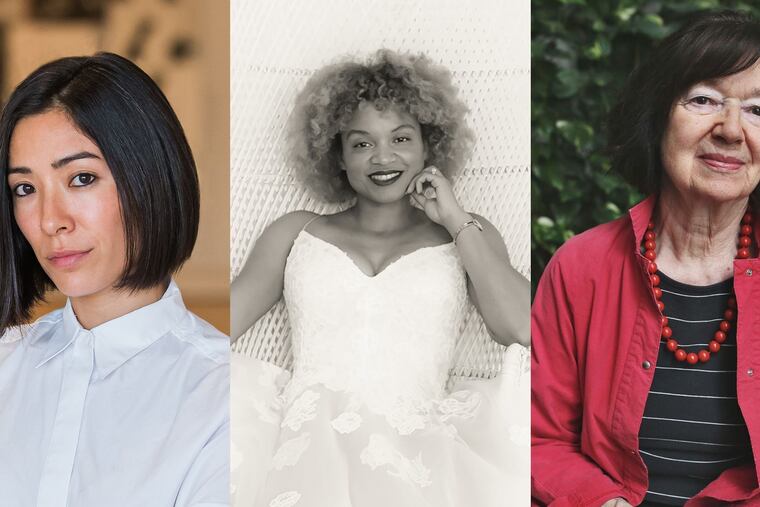Moore brings in a Whitney Biennial curator and two other high-powered women to create edgy exhibitions at the art school
Up first is Mia Locks, who's a prominent Los Angeles curator and a scion of Philly's venerable Locks Gallery.

Over the next two years, Moore College of Art and Design near Logan Square will bring three well-known curators from outside the region to mount exhibitions that explore feminism, migration, race, community, and other complex subjects.
The first of the visiting curators, Mia Locks, 36, is not exactly unfamiliar with Philadelphia as an art venue. Her mother, Sueyun Locks, is the director of the venerable Marian Locks Gallery, now on Washington Square.
Mia Locks, named senior curator at the Museum of Contemporary Art, Los Angeles, earlier this year, will present “Or Both," an exhibition highlighting the work of Austrian-born artist Ulrike Müller. Müller’s work will appear alongside a group show that includes work by several other artists, including Martin Beck, Barbara Chase-Riboud, Jennie C. Jones, Eric N. Mack, Medrie MacPhee, Dona Nelson, and Deborah Remington.
The show will open Sept. 27 and run through Dec. 7.
“It’s a two-part exhibition,” Locks said by phone from Los Angeles. “From the beginning I started thinking about the [gallery] space. There are two sides and they have a different feeling, a different mood, a different texture. Even the sound is different.”
This led Locks to seek a different way to show Müller’s diverse body of work, which can utilize paint on canvas, drawing, textile, enamel on steel, collage, fabric, and even performance, publishing, and audio text. The group show is more engaged in exploring Müller’s compositional methods than her subject matter and is “really a formal experiment,” Locks said.
Locks is perhaps best known outside of the art world as co-curator of the 2017 Whitney Biennial, which sparked a major controversy by presenting white artist Dana Shutz’ portrait of Emmett Till, mutilated and disfigured in his open coffin. The piece was widely criticized as an instance of white exploitation and appropriation of the African American experience. (Till was a 14-year-old African American child who was beaten and lynched by white men in Mississippi in 1955, a brutal dawn for the civil rights movement.)
Many artists sought to have the painting, Open Casket, removed from the biennial and even destroyed, which the curators and the Whitney refused to do. At the time, Locks and co-curator Christopher Y. Lew acknowledged that Open Casket presented an “unsettling image” with “tremendous emotional resonance,” particularly for African Americans.
“By exhibiting the painting, we wanted to acknowledge the importance of this extremely consequential and solemn image in American and African American history and the history of race relations in this country,” Locks and Lew wrote in a joint statement in 2017. “As curators of this exhibition we believe in providing a museum platform for artists to explore these critical issues.”
Locks said she had nothing more to add to the statement.
The next two shows
In the fall of 2020, independent curator Kalia Brooks Nelson, who teaches at NYU’s Tisch School of the Arts, will mount an exhibition featuring three women of color: Firelei Báez from the Dominican Republic, Pamela Phatsimo Sunstrum from Botswana, and Saya Woolfalk from Japan. The show will focus on themes of migration and femininity.
The third exhibition, in the fall of 2021, will be mounted by Charlotta Kotik, an independent curator and former head of the Brooklyn Museum’s modern and contemporary art department. Kotik plans to present socially engaged artworks, working closely with Moore students and people from surrounding communities.
Gabrielle Lavin Suzenski, director of the Galleries at Moore, said she believed that the shifting curatorial perspectives each year will expand Moore’s reputation as “an incubator for contemporary thinking” and “provide a unique and creative opportunity for curators to experiment in a new environment full of collaborative possibilities.”
She added that “to have this outside perspective is a really unique way to add variety to what we’re doing.”